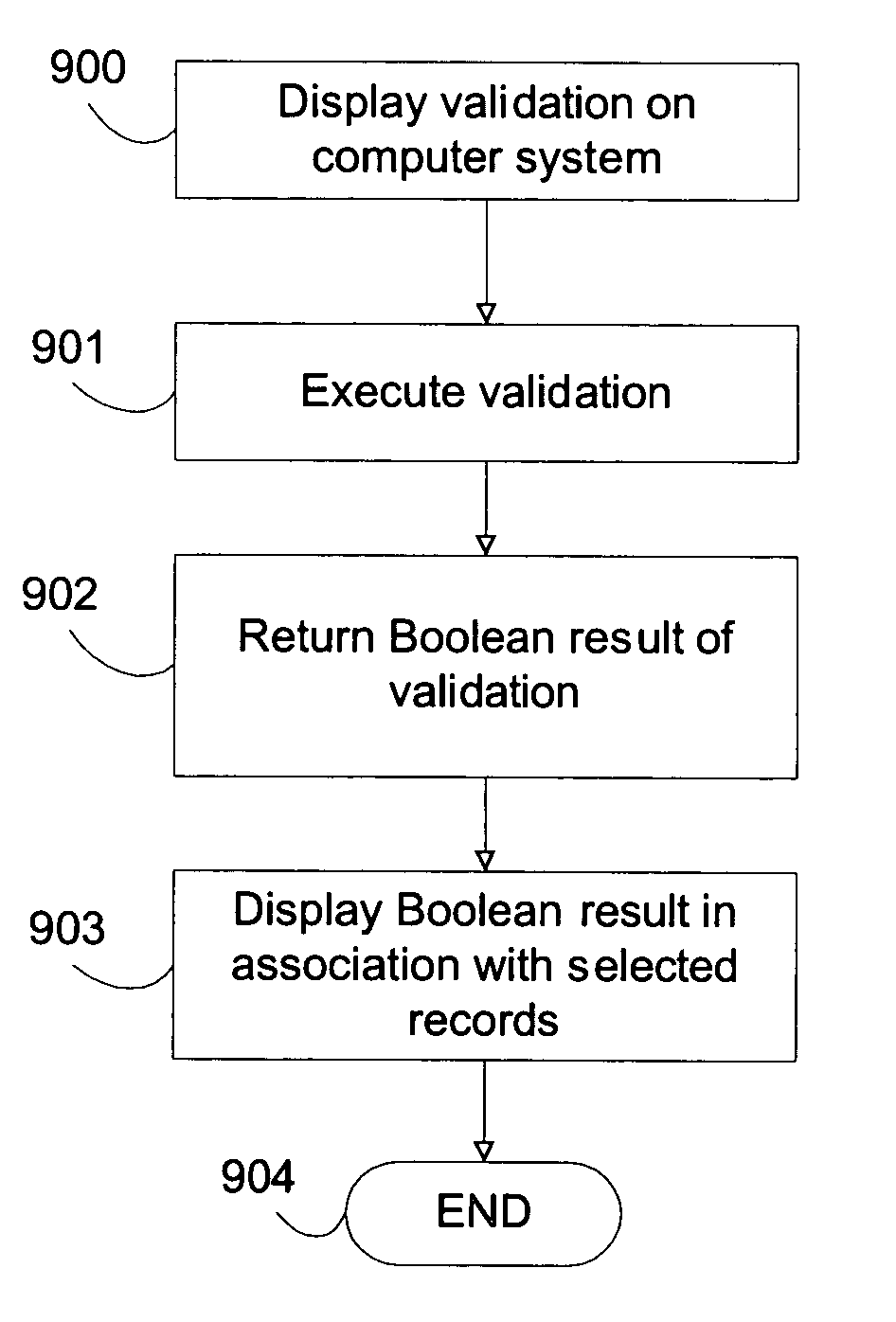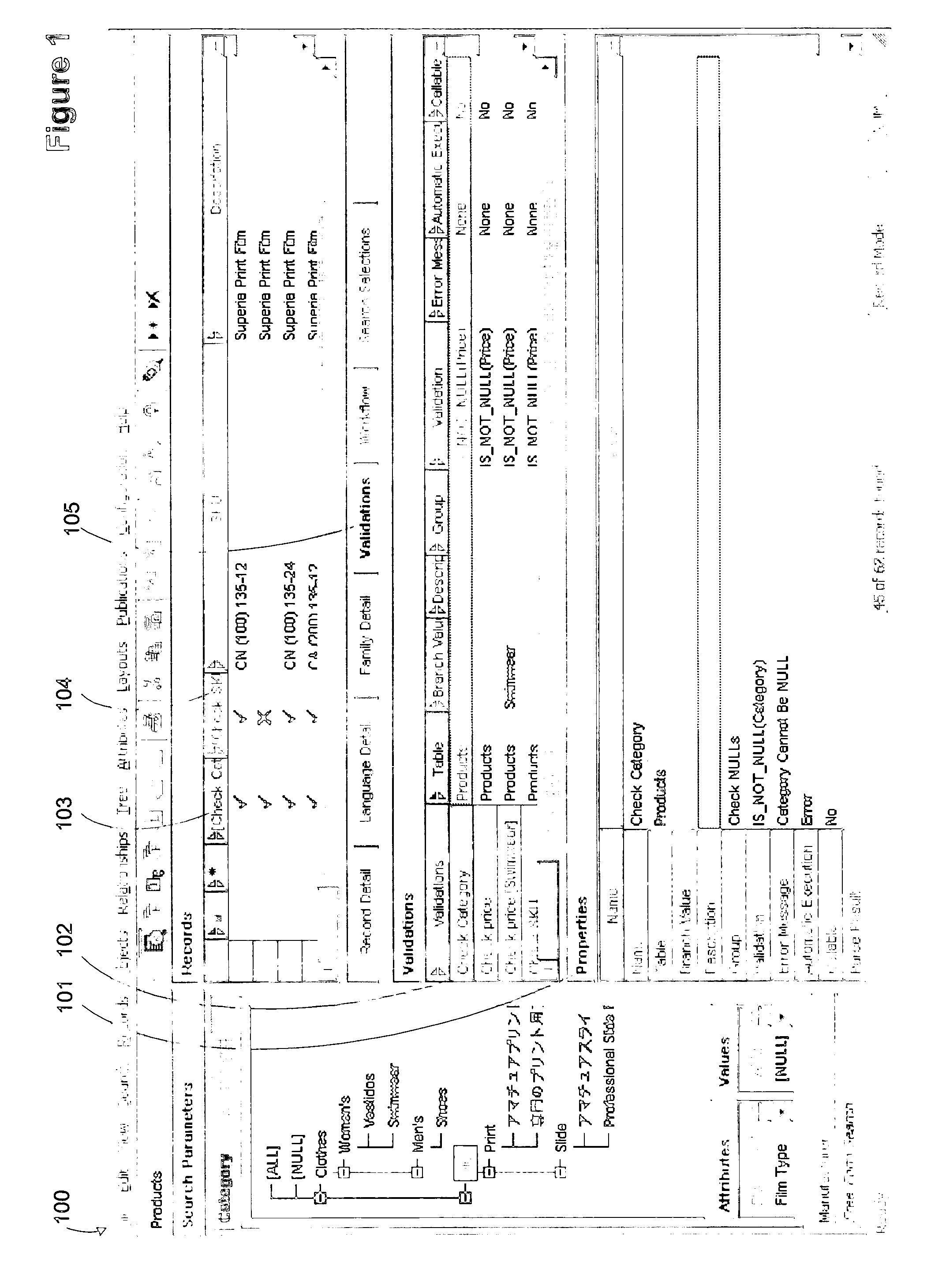[0007] As utilized in the context of this disclosure, “attributes” are quantities that are associated with subsets of the main data table, i.e., specific to a given category. “Fields” are associated with all records of the main data table, i.e., all records in the main data table comprise the same fields. However, based on the value of a category field or other any other fields of the main data table, attributes may be associated with a subset of the records of the main data table. An “audience” may be thought of as a third dimension added on top of the main data table and attribute tables so that audiences that comprise different languages, regions, regulatory zones, or any other
subdivision based on any quantity may be used to form a hierarchy upon which to find data for fields or attributes that are not found on a given audience level in the database. Audiences can be as complex as required to support the number of targets and number of languages, regions, religions, cultures or any other division conceivable. An audience hierarchy may be formed from the viewpoint of a given audience to take
advantage of the entries of most of the other fields of another audience, so that multiple audiences that are similar may be readily supported. For example, to support a catalog targeting the United Kingdom, the word “colour” in a field or attribute would simply need to have the word “color” replaced in order to support the same catalog targeted at the United States. By making one audience inherit from another, any entries not found in one audience are automatically obtained from another audience. This increases the integrity of the data and allows for one edit to alter the output for as many audiences as use a piece of data. “Lookup tables” are used in order to place a text object for example in one place in the database and which are referenced by a smaller quantity, i.e., a reference identifier or key into the
lookup table.
[0008] A validation expression can define intra-record tests and inter-record tests with unlimited complexity. Specifically, validation expressions can reference fields and attributes (using any table including the main table, lookup tables and non-lookup sub-tables), perform arithmetic, string, and
logical operations, call built-in functions, and even reference other previously defined validations. A validation expression is token-based, so that a user is not required to manually type field, attribute, operator or function names. Instead, the tokens to be used in the expression are selected from drop-down lists, reducing the potential for
typing error. For example, pre-defined dimensions and units of measure allow for tokenized input of these elements without requiring manual
typing of the desired dimension or unit of measure. A validation expression may
branch on audience, family or category values within a validation. The specific
branch is then performed based on the value of the audience, family or
category specific value for one or more designated records.
[0015] Validation execution results in different behaviors based on the level of execution of the validation. For example, in one level a validation execution can be designated as a warning validation. In this mode a warning is displayed to a user before saving a record if a validation fails, although the record update still occurs. In another level of execution, a validation execution may be designated as an error validation for example. In this mode, the
user interface displays the error and also prevents the record from being saved if a validation fails, i.e., if the Boolean value returned from the validation is FALSE. For validation groups, the final outcome of multiple validations are the results of each and every validation, so if any of the validations in a group fails, and the level of execution for the failed validation is warning level, then the warning is displayed and if the level of execution for another failed validation is error level, then the error is displayed and the update does not occur with respect to the data record that the validation refers to. Other embodiments of the invention may perform
short circuit checking and display only the first error encountered in case of a large amount of validation errors related to one element. This saves the user from interacting with a multiplicity of error dialogs for example. Other embodiments of the invention may utilize a global level of execution for a validation group so that if any validation in the group fails, the whole group fails which prevents any of the updates associated with the group from occurring. Any other method of combining the results of the validations in a validation group are in keeping with the spirit of the invention.
 Login to View More
Login to View More  Login to View More
Login to View More 


